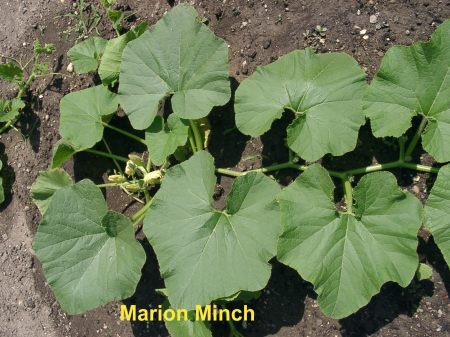
flower calender (germany)
| jan |
feb |
mar |
apr |
may |
jun |
jul |
aug |
sep |
oct |
nov |
dec |
| |
|
|
|
 |
 |
 |
 |
 |
 |
 |
 |
Kurzbeschreibung der Pflanze:
| Blütenfarben: |
 
|
| Größe: |
10 bis 1000 cm
|
| Blütenform: |
Glocke
|
| Blattform: |
gezähnt, spitz
|
| Beschreibung: |
Einjährig, niederig wachsend, Steifhaariger Stengel, große herzförmige Blätter, borstig und behaart. Große gelbe Blüten
|
| Wissenswertes: |
Kürbiskerne helfen in der Schwangerschaft den Brechreiz zu lindern.
|
| Standort: |
Kulturpflanze
|
| Bemerkungen: |
Blüten sind esbar
|
| Inhalt: |
Reichlich fettes Öl im Samen; Phytosterin, Vitamin E und hormonartige Wirkstoffe
|
| Keimzeit: |
Frühling
|
some ingredients in ppm (parts per million):
| element |
part |
quantity |
minimal |
maximal |
| Calcium |
Leave |
|
364 |
2,580 |
| Fat |
Leave |
|
17,500 |
124,000 |
| Iron |
Leave |
|
20.4 |
145 |
| Magnesium |
Leave |
|
388 |
2,752 |
| Protein |
Leave |
|
45,800 |
324,800 |
| Water |
Leave |
859,000 |
|
|
| Zinc |
Leave |
|
7.6 |
54 |
summary from an email of the mailing list: Schildifutter - Mailingsliste
from Marion Minch
>>
The original message from Darrel:
Pumpkin - a favorite subject.
All of the below are direct clips copied from things I wrote a year or more ago and from a brief article I wrote on pumpkin last fall.
Someone asked if pumpkin was good to feed. I do so myself but I do not freeze it in order to use it frequently as the composition is not really all that great.
But as a food that is available only once in volume (halloween) a year - I do not think it to be dangerous. The values for raw pumpkin are as follows.
In 100 grams of raw pumpkin
91.600 % water
1.000 % protein
6.500 % Carbohydrate
0.500 % Fiber
21.000 mg Calcium
44.000 mg Phosphorus
1600.000 IU Vitamin A
As you can see the Calcium / Phosphorus ratio is wrong to use this as a staple.
I add a calcium supplement liberally to it when I use it.
Paula Morris and some others use it as a fall "fiber flush " and high carbohydrate source for prepping for hibernation. For such a purpose it is made to order.
On a side note to this - pumpkin contains Mannitol, which is a known Anthelminthic (source of information - "The Wealth of India raw materials. Publications and Information Directorate, CSIR, New Delhi.") A food that is nearly free AND a natural wormer? This is in the flesh not in the seeds, though the seeds are high fiber. Pumpkin is the food that has the highest level of mannitol by far. 150,000 - 200,000 ppm. In contrast other natural sources are pomegranate; 18,000 ppm and celery stems with 10,000 - 20,000 ppm. Chicory also contains it but to a much lower degree. Pumpkin contains almost an order of magnitude more than the next possible natural tortoise or turtle food. It is a known anthelminthic and by virtue of its primary site and mechanism of action, mannitol has a high diuretic potential and can markedly increase fluid flow rate in all nephron segments including the proximal tubule. Thus, when administered early in the course of acute renal failure, mannitol tends to flush out cellular debris and prevent tubular cast formation.
In emergency care, mannitol is used (intervenously) in the treatment of head injury to decrease cerebral edema and intracranial pressure, and in the promotion of urinary excretion of toxic substances.
All of the above are based on human studies - but until a better source comes along....
....
I wish to stress that in no way should "folk" remedies ever take the place of veterinary care. But - if I were treating an animal with probable / possible kidney problems I would add some pumpkin to its diet to help clear the kidneys. As it promotes urination I would not use it with an already dehydrated animal. Interestingly this also promotes water absorbtion from the intestines. (Yes it does both.) Logically this leads me to believe that it might be worthwhile to mix it in diets of newly imported Asians undergoing treatment as so many of them seem to suffer kidney problems as long as hydration is maintained, especially if I were treating with a antibiotic that has known kidney impact. And as a possible natural worming agent I do feed it - seasonally and with added calcium as stated above.
--
Darrell Senneke, Director - Tortoise Trust USA
<< translated by: Darrell Senneke
further information on:
description
 |
 |
 |
 |
 |
 |
 |
 |
|
|
|
|
| available in summer and winter |
european tortoises |
desert tortoises |
tropical tortoises (wetland) |
terrapins |
turtles |
plant available |
plant flourish |
|
|
|
|
